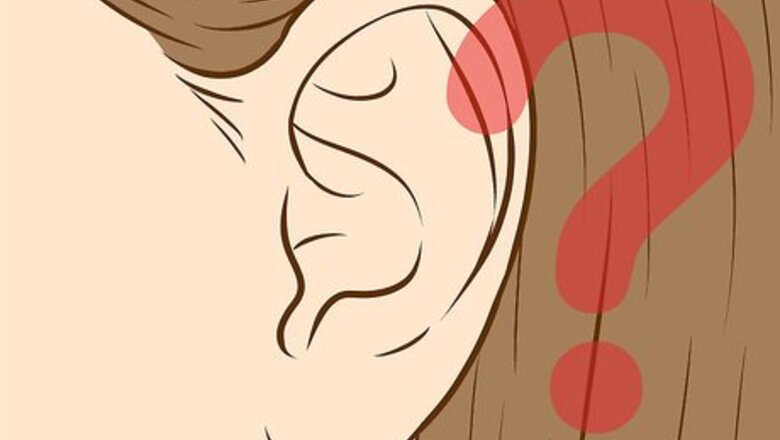
views
Preparation
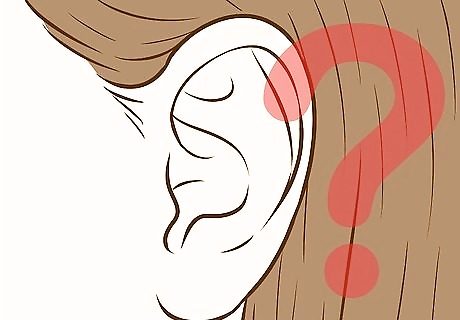
Decide where you want the piercing. Although the lobe and cartilage are the most popular choices, there are many piercing options around the ear. Some of the more uncommon placements include tragus, helix, orbital, daith, and conch. The placement you choose will also affect the price of the piercing. Look into pricing. Some places like Claire's will pierce your ears for free, provided you purchase the earrings from them. Piercing studios will often charge for the piercing and the earrings. Placement also affects price. Lobes are usually cheapest at around $20, while a helix orbital piercing can cost up to $80. Generally, prices range between $30 to $50.

Eat or drink something before you go. Make sure your blood sugar is at a healthy level, especially if you’re feeling nervous. Having a snack will help keep you from feeling faint or even fainting outright. Some snacks that will help keep your blood sugar up include cookies, crackers, and juice.
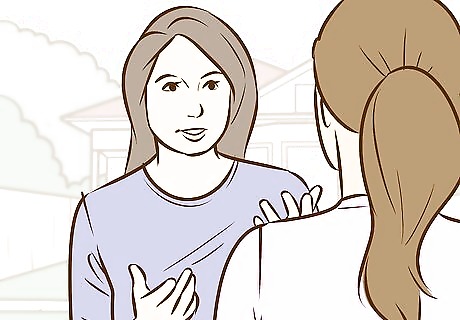
Ask a friend to come with you. If this is your first piercing experience, having a friend come along can help ease any anxiety and make it a fun experience, rather than a scary one.
Choosing a Piercer
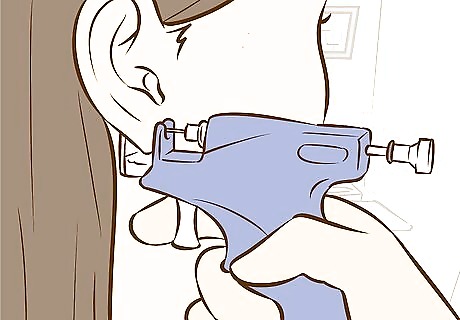
Decide whether or not you want to use the piercing gun method. It's important to consider which piercing technique you're most comfortable with. Piercing guns, like the ones used at Claire’s and Icing, push the earring straight through the skin. Piercing guns, while quick and inexpensive, often cause more infections. The guns can be disinfected but not completely sterilized because they are made of plastic and do not hold up under sterilization techniques used for needles and other professional tools. Although this method is not widely recommended, as it does cause some blunt-force trauma to the ear, it is still common and many people choose it out of convenience.
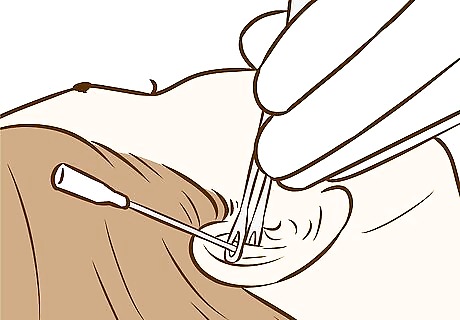
Consider the benefits of the hollow needle method. Tattoo shops and professional piercing studios use the hollow needle method, which creates a clean hole instead of forcing the earring through the skin. This method sounds more painful, but many report that it's actually less painful. The hollow needle method is preferable because it won’t infect as easily or heal over as quickly if you go without earrings for a long period of time.

Make sure that the piercer is experienced. A good piercer will have ample experience. If you’re not confident that they are prepared and experienced enough, it may be worth finding a different piercer or location. It's okay to ask the piercer how much experience they’ve had. At locations like Walmart, the piercer receives very little training and may not have any experience, so it's better to ask than have something go wrong. Generally, professional piercers should have at least a year of experience before they start working alone. Checking reviews online is a great way to get a feel for the piercer's experience and the quality of service.
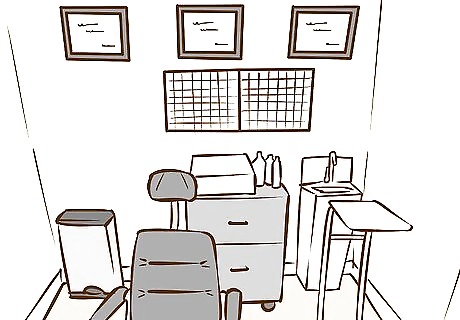
Check for cleanliness. A dirty studio is a red flag, so look around for general cleanliness. Make sure the piercer uses disposable gloves and sterile packets for each new needle. This is a crucial safety measure. If they don’t use proper sterilization techniques, you should probably find a different studio.
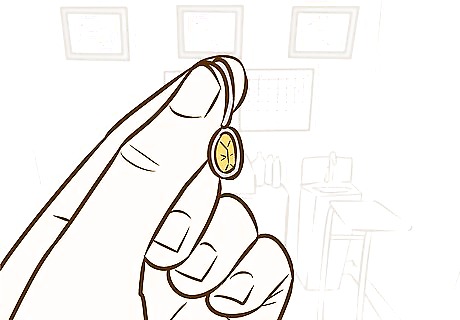
Pick the earrings you want to have your ears pierced with. When you get your ears pierced professionally, you will likely have to choose from the in-store selection. It’s important to know how to choose the best and safest earrings, since these will stay in your ears for the next six weeks.
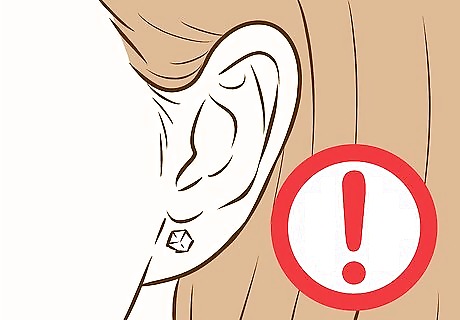
Be careful about choosing a hyper-allergenic material, particularly if you have any metal allergies. Look for earrings free of nickel and cobalt, as these materials commonly cause allergic reactions. The safest earring materials are surgical stainless steel, platinum, titanium, and 14K gold. If these are over your price point, gold and silver are generally safe options as well.

Fine-tune the placement of the piercing. The piercer will use a surgical marking pen to place dots where the earrings will go. Examine the dots in the mirror and make sure they’re placed where you want them. The piercer can always wipe off and re-draw the dots if needed.
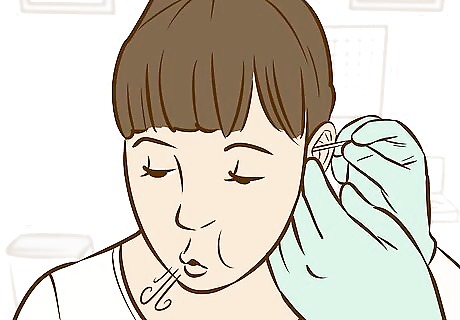
Take a deep breath. Prepare yourself by taking a deep breath and the piercer will guide you through the process, which, for lobe piercings, is usually painless and takes less than a minute. You’ll feel a slight pinch on your earlobe, and then you’re done. For less common piercings, the pain may be higher and the piercing may take a bit longer. Cartilage is harder to push the needle through, so it may take a few moments to complete the piercing.
Aftercare
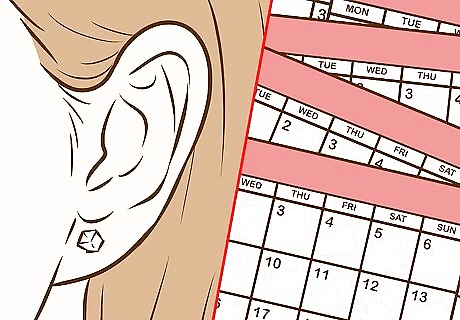
Leave your earrings in for the recommended length of time. Keep the earrings you had your ears pierced with in for as long as possible to prevent infection and keep them from closing up. For lobe piercings, leave your earrings in for at least six weeks. Eight to ten weeks is even better, as the extra time allows your lobes to fully heal. If you pierce any other part of your ear besides the lobe, leave the earrings in for three to five months to ensure they heal safely.
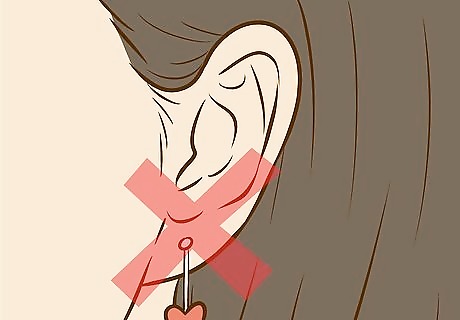
Avoid wearing long, dangly earrings for approximately six months after the piercing. Wearing this style of earring too soon can actually stretch the piercing, if worn for a long time. Continue to wear post-style earrings after the six months and only wear French-style earrings for short periods of time until you feel confident that the piercing has healed.
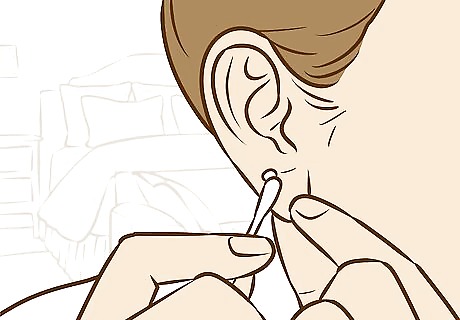
Clean your piercings daily. Use the solution that came with your piercing or recommended to you by the piercing professional. Use a cotton ball or swab to coat the earring with solution, then twist the earring in both directions and move it back and forth for a minute to make sure the solution coats the piercing. This action also keeps your earring from attaching to the piercing as it heals. Make sure the backs of the earrings are not too tight, pressing on the ear, or embedded in the ear.
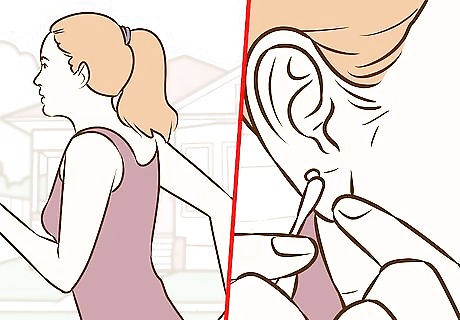
Always clean your piercings after activities that cause you to sweat, such as working out, or after swimming in a pool. Sweat and chlorine can cause infections so it's important to clean your earrings as soon as possible.
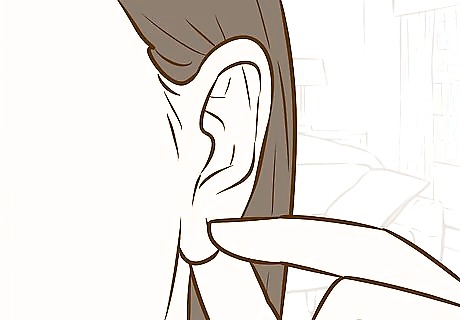
Avoid touching your piercings. The more you touch them, the more germs you transfer and the more you’ll irritate them. This makes you more likely to get an infection. If you do need to touch your earrings, make sure to disinfect them afterward. If you find it hard not to touch the earrings, you can place a small band-aid over the piercings.

Treat any infections immediately with a saltwater solution. If you notice any pain, swelling, or redness, soak your piercings in a warm saltwater solution for a few minutes. The saline will disinfect your piercing and soothe the discomfort. If the infection progresses and does not improve after three days, see your doctor or a dermatologist. Infections can become extremely serious, so make sure to take care of them as soon as possible.










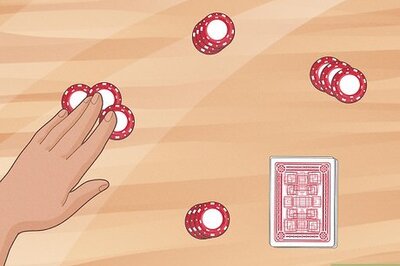









Comments
0 comment